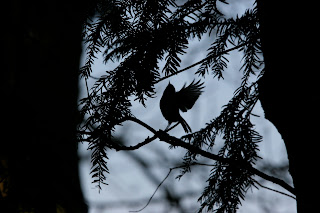For two weekends on the trot I have been on the coast at first light to watch the arrival of migrating birds, picking out my first Bramblings and Fieldfares of the winter from many other newly arrived individuals. A persistent theme of both weekends has been the numbers of Goldcrests, arriving exhausted from their recent sea crossing and keen to feed up on small invertebrates gleaned from trees and shrubs.
 |
| Goldcrest, by Mike Toms |
I am in awe of these tiny creatures. Weighing no more than 7g, they are one of the lightest birds to undertake regular sea crossings when on migration. This feat can be considered all the more remarkable by the fact that they carry little in the way of fat reserves and, with little fuel with which to make the journey, it is little wonder that they arrive exhausted. Equally remarkable, to my mind at least, is that these diminutive birds are able to survive long winter nights and low temperatures by burning up energy reserves that may see them lose a fifth of their body weight over a single night.
Our Goldcrests, those that I encounter in the forest throughout the summer months, are largely sedentary in habits. With the possible exception of those from more northerly parts of Britain, these individuals spend the winter here, with some moving into gardens to take advantage of the fat products that many householders now provide. Those from elsewhere in northern Europe, notably northern Scandinavia and Russia, move south or southwest in autumn and it is these birds that have been arriving along the Norfolk coast over the last few weeks.
Many are young birds, perhaps reflecting a good breeding season, but maybe also underlining their short lifespan and the high degree of turnover of individuals within the Goldcrest population. We handled a good number at one of our coastal ringing sites the other day and it was clear that some had just arrived, being of low weight and low fat score (we can score the amount of fat on a bird because the fat is carried in a pit on the chest and along the belly), while others had been in for a couple of days and had already fattened up.
No comments:
Post a Comment